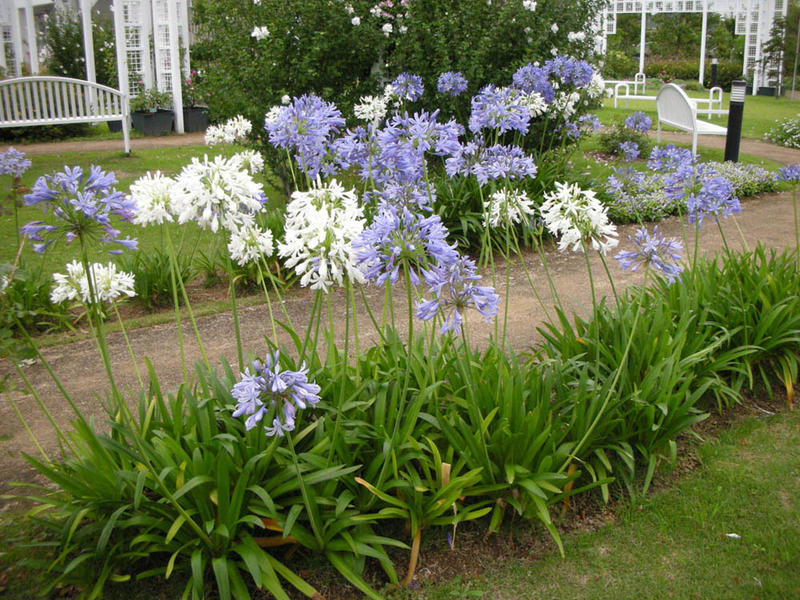Agapanthus Treatment Tips for Lush and Vibrant Flowers
Wiki Article
Understanding the Art of Agapanthus Care: Essential Actions for Healthy Development and Vibrant Blossoms
In the realm of gardening, the farming of agapanthus stands as a fulfilling venture for those who look for to nurture these elegant blooming plants. With their striking flowers and graceful vegetation, agapanthus has captured the interest of gardeners worldwide. Nonetheless, achieving optimum development and lively blooms calls for a nuanced method that encompasses different necessary actions. From choosing the right selection to grasping trimming methods, the journey in the direction of cultivating prospering agapanthus plants is diverse and holds the crucial to unlocking the complete potential of these organic gems.
Choosing the Right Agapanthus Variety

When choosing the right Agapanthus range for your yard, take into consideration factors such as climate viability, blossom color, and growth routine. In addition, think about the environment in your region to make sure the Agapanthus variety you choose can thrive in your certain conditions. Recognizing the development routine of different Agapanthus ranges is vital for appropriate positioning within your garden.
Suitable Growing Problems
Taking into consideration the optimal ecological needs is necessary for successful Agapanthus cultivation. Agapanthus plants are delicate to cool temperatures and need to be secured from frost during wintertime months.To guarantee healthy and balanced development and dynamic flowers, plant Agapanthus light bulbs at a deepness of concerning 2-4 inches and room them 8-12 inches apart. Adding organic issue, such as garden compost, to the dirt can improve drainage and fertility, advertising durable origin growth. Mulching around the base of the plants aids preserve dampness and suppresses weed development. Regular watering is crucial, particularly during the expanding season, to keep the dirt continually moist but not soaked.
Watering and Feeding Tips
Preserving appropriate wetness levels and giving important nutrients are key aspects in the treatment program for Agapanthus plants. It is vital to strike an equilibrium when it comes to sprinkling Agapanthus. If overwatered, these plants like regularly wet soil yet are prone to root rot. During the expanding period, water deeply as soon as a week, guaranteeing the soil is well-draining to avoid waterlogging. In hotter environments or during periods of dry spell, more regular watering may be needed to keep the soil equally damp. Nonetheless, minimize watering in the winter to avoid water logged problems.Feeding Agapanthus is necessary for promoting healthy development and prolific blooms. Apply a balanced plant food, such as a 10-10-10 formula, in the very early springtime as brand-new growth emerges. Repeat this application every 6-8 weeks throughout the growing season. Avoid extreme fertilization, as it can lead to lush foliage at the expense of flowers. Always follow the maker's guidelines for correct dilution and application techniques. By following these watering and feeding pointers, you can guarantee your Website Agapanthus plants grow and create vivid, resilient blooms.
Trimming Strategies for Agapanthus
Pruning Agapanthus plants at the ideal times and with correct methods is critical for preserving their wellness and advertising optimal growth and flowering. The suitable time to trim Agapanthus is in late wintertime or very early springtime before brand-new development arises. Beginning by getting rid of any dead or yellowing leaves near the base of the plant. Cut them as close to the ground as feasible without harming the emerging shoots.Deadheading spent blossoms can additionally reroute the plant's energy right into generating even more blossoms instead than setting seeds. If you want to gather seeds for proliferation, leave some blossoms to fully grown and dry on the plant.
Bear in mind to make use of tidy, sharp tools to make precise cuts and minimize the risk of introducing diseases. Agapanthus. Regular pruning will certainly aid keep your Agapanthus looking healthy and neat while ensuring an abundant display screen of beautiful flowers
Handling Common Parasites and Diseases
After making sure appropriate trimming techniques for Agapanthus, it is crucial to deal with common pests and conditions that can impact the health and wellness and vitality of these plants. One typical parasite that influences Agapanthus is the Agapanthus gall midget.In addition, Agapanthus plants can endure from root rot if they are planted in poorly draining dirt. By being watchful and taking timely activity against bugs and conditions, you can assist your Agapanthus plants thrive and produce lively flowers. Agapanthus.

Verdict
To conclude, understanding the art of agapanthus treatment entails selecting the right variety, giving ideal planting conditions, correct watering and fertilizing, ideal pruning methods, and Visit This Link attending to common insects and illness. By adhering to these crucial actions, you can make sure healthy development and vivid blossoms for your agapanthus plants. Keep in mind to frequently keep track of and keep your plants to advertise their general health and durability.To make sure healthy growth and dynamic blossoms, plant Agapanthus bulbs at a depth of about 2-4 inches and space them 8-12 inches apart. By following these watering and feeding tips, you can guarantee your Agapanthus plants flourish and create vibrant, lasting blossoms.
One common parasite that affects Agapanthus is the Agapanthus this content gall midge. In addition, Agapanthus plants can endure from origin rot if they are grown in poorly draining pipes dirt. By complying with these crucial actions, you can make certain healthy growth and lively blooms for your agapanthus plants.
Report this wiki page